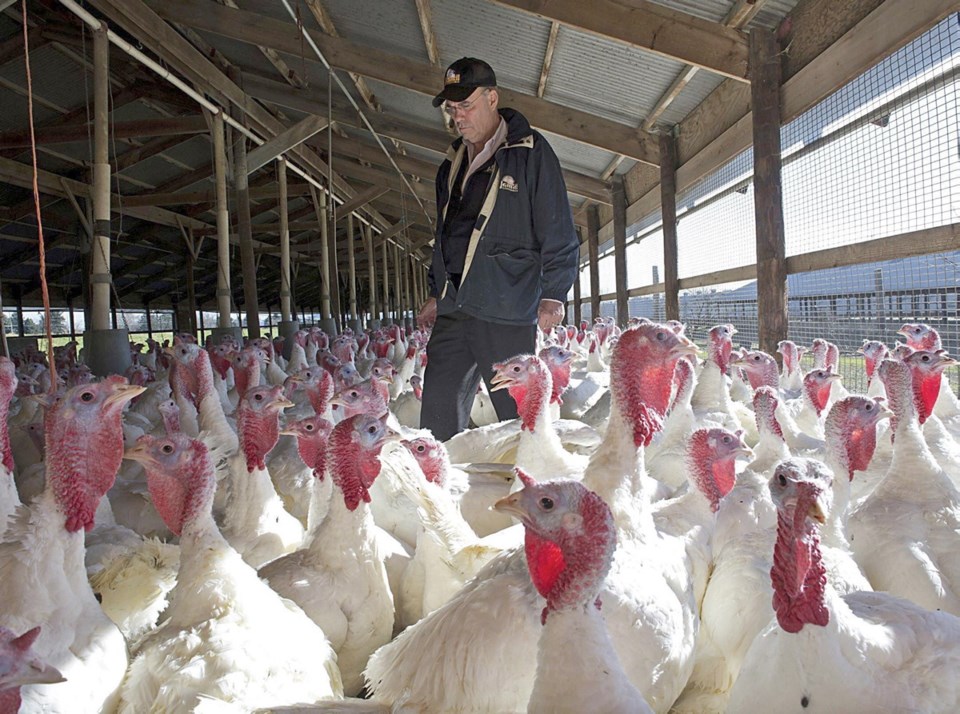Partridges, turtle doves, French hens, calling birds, laying geese, swimming swans — it’s a barnyard aviary in just one song. Food preferences have changed since 1780, when the earliest known version of the carol first appeared in a 1780 children’s book called Mirth With-out Mischief.
They’ve changed even since 1909, when English composer Frederic Austin set the melody and lyrics, adding a few personal touches and flourishes. We no longer feast on swans, dine on doves or eat blackbirds (colly birds) — prepared separately or stuffed one inside the other turducken-style.
But if you find it hard to keep the old-timey fowl and poultry straight, maybe these holiday numbers will stick instead:
Of turkeys, treats, and feasts
Having guests over for the holidays? Expect to see evidence of it in your first electricity bill of 2020. According to B.C. Hydro, in 2018, British Columbians used approximately 8,000 megawatt hours more electricity by midday on Christmas Day compared with the same day the previous week.
That’s enough to cook 1.5 million turkeys.
And, indeed, cooking and baking in preparation for holiday guests likely accounts for the surge in use. A 2019 B.C. Hydro survey reveals nearly 95 per cent of British Columbians plan to prepare meals from scratch at home for family and friends over the holidays. In addition, more than 60 per cent plan to bake holiday treats at home.
About those turkeys …
Last year, Canadians bought 2.4 million whole turkeys to cook over the holiday season, according to Turkey Farmers of Canada. The turkey business in 2018 brought in almost $49 million in revenue to B.C.’s single registered turkey hatchery and 67 registered turkey farmers.
… And the trimmings
About 80 farmers in the lower Fraser Valley and on Vancouver Island grow more than 34 million kilograms of cranberries each year to accompany those roast turkeys — as much as 12 per cent of North America’s cranberry production.
As for the rest of the meal, in 2017, B.C. farmers planted almost 2,400 hectares of potatoes, which yielded more than 80,000 tonnes of the vegetable. Compare that with 21 hectares of parsnips planted and 172,200 kilograms harvested in B.C. that year.
Holiday bling
Between 2009 and 2011, British Columbians used about 40 per cent less electricity for outdoor holiday lighting, thanks to increased use of energy-efficient LED lights. Since then, however, power use for holiday lighting has increased, as more B.C. residents set up elaborate outdoor displays.
A 2018 B.C. Hydro survey found that one in three B.C. residents live next to or near someone who goes all out with Christmas light displays. Four per cent of survey respondents reported that they install more than 750 lights each year. The biggest displays include more than 100,000 lights.
Fifteen per cent of respondents admitted to blowing a breaker switch from overloading their lights and decorations.
Dark, cold, raw Christmas
Last year’s windstorm that knocked out power to hundreds of thousands just before the holidays was the most damaging in B.C. Hydro’s history, according to a new report.
The Dec. 20, 2018, storm was preceded by several days of heavy rain that destabilized trees, according to B.C. Hydro’s review of the event. More than 750,000 households lost power — most for about a day, but for some up to 10 days — and more than 900 field workers were out around the clock to repair broken power poles, transformers and cross-arms, and replace downed wires.
The coal in the stocking
In 2018, B.C. Hydro’s subsidiary, Powerex Corp., exported 8.7 million megawatt-hours of electricity to the U.S. and imported 9.6 million megawatt-hours of electricity from the same. Many of the states that the company imported power from generate considerable amounts of their electricity from coal. For example, 23 per cent of Arizona’s power, 70 per cent of Utah’s power and 90 per cent of Wyoming’s power comes from coal-fired plants. California, Washington and Oregon — the three states that supplied the most to B.C. — have less of a coal dependency to generate power.
The trade deficit accrued because Powerex Corp. makes more money when B.C. Hydro slows its generators down to import cheaper power. According to Canada Energy Regulator (formerly the National Energy Board) data, in 2018, the subsidiary sold B.C. power for an average of $87 per megawatt-hour and imported electricity for an average of $58 per megawatt-hour.



